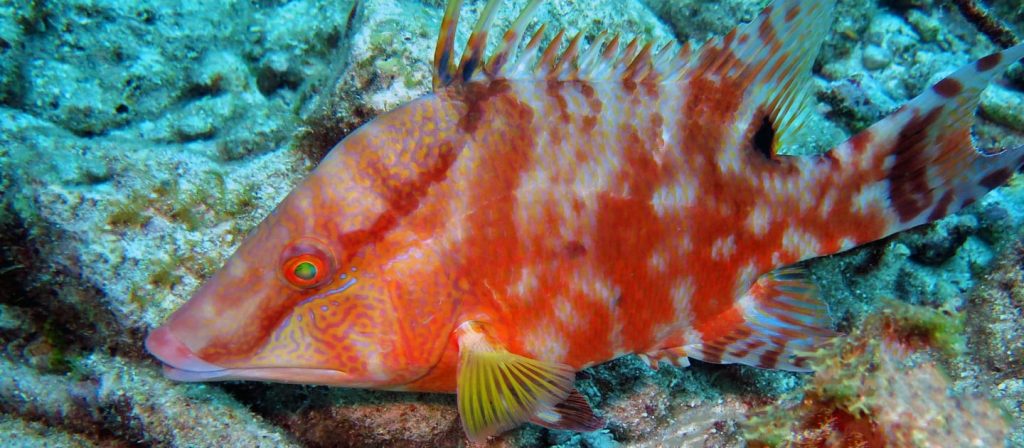Originally published on August 23, 2023 on news.fiu.edu.
Written by JoAnn Adkins
When fish suddenly change color, little photoreceptors embedded deep within their skin keep watch to ensure the color is just right, according to new research.
For the first time, scientists have examined the structure of the system that not only allows animals to rapidly change color but also to do so with enough accuracy to survive. The research team, which includes FIU marine scientist Heather Bracken-Grissom and is led by Lori Schweikert of the University of North Carolina Wilmington, examined hogfish for the study published this week in Nature Communications. The pointy-snouted reef fish can change from white to reddish brown in milliseconds as it adjusts to changing conditions in its environment. It’s accuracy in determining its color comes from photoreceptors within the fish’s skin.
“If these fish don’t get the colors right, they would be preyed upon,” said Schweikert, who conducted some of this research while a distinguished post-doctoral researcher at FIU in the College of Arts, Sciences & Education and the Institute of Environment.
Hogfish have cells filled with pigments that can make the fish appear dark in color when the pigments are dispersed and light in color when the pigments are clustered together.

When the scientists took a closer look under advanced microscopes, they found for every color changing cell in the hogfish, there was a corresponding photoreceptor observing light. While that was interesting enough, it is the location of the photoreceptors that most surprised them. If the photoreceptors were there to observe changing light conditions of the surrounding environment, they would likely be embedded near the surface of the skin. But in the hogfish, the photoreceptors are buried deeper and actually found underneath the color changing cells, meaning they are detecting the actual process of color changing and providing feedback to ensure the correct color is expressed.
The scientists liken this function to a person looking in a mirror to determine whether their outfit makes sense for the day. Only for people, an outfit choice is rarely a life and death matter. For a hogfish, selecting the wrong color could make them easier to find by predators.
Better understanding how these biological systems work is important for scientists working to protect species and the health of the oceans. Bracken-Grissom also points out that this knowledge can be useful to people.
“Bio-inspired design allows us to take knowledge from nature and benefit society,” she said. “Knowing how these photoreceptors work could have implications for sensor technology and other areas. There’s just so much we can learn from nature.”
In addition to Schweikert and Bracken-Grissom, the research team included scientists from Duke University, Florida Institute of Technology and the Smithsonian Institution.

